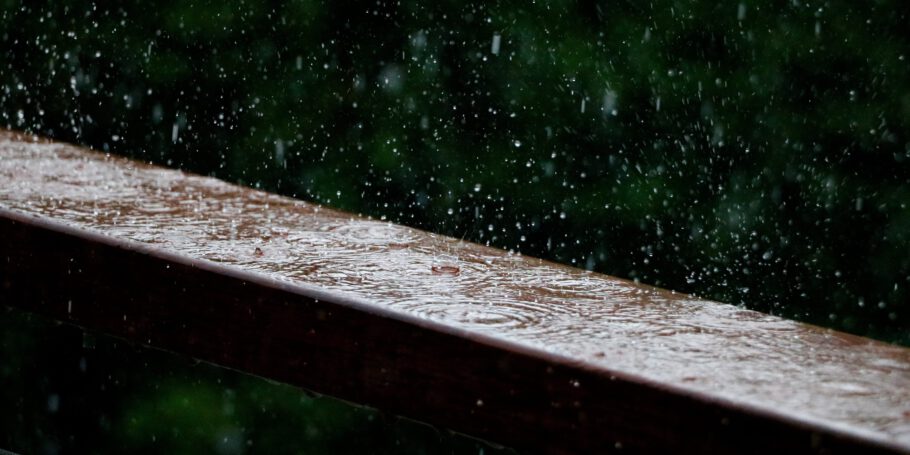New fee for rainwater
Areas of interests / 21 September 2018

On 1 January 2018, a new act – the Water Law – will come into force. This act, still at the stage of work on it, evoked numerous controversies, in particular with regard to the estimated growth of fees for water extraction from one’s own water intake points. Nevertheless, a change of the method of calculation and payment of fees for water extraction and waste water removal has become a fact. Is it really such a big change and what does it mean in practice for the owners of real estate?
The old is going away…
The current fee on rainwater removal depended on a number of factors. One of them was the purpose of the land, which translated directly to the value of the unit rate of the fee. Another was the size of the contaminated hard-surface space. This method of calculation of the fee will apply for the last time for 2017.
“Tax on the falling rain”
A new solution introduced by the Act of 2017 is the introduction of a fee for reduction of natural retention which will apply to real estate which does not have sewage systems. The new fee has already been christened a “tax on the falling rain”. That is because its purpose is to stimulate real estate owners to use rainwater by, for instance, construction of retention tanks.
The fee will be calculated on the real estate which is located in areas deprived of sewage systems, provided that two conditions are met. Firstly, the surface area of the real estate may not exceed 3500 m2. Secondly, it must be developed in such a way that more than 70% of its surface is excluded from biologically-active area. In this way, the areas deprived of sewage systems which were previously outside the scope of application of the act will now be subject to a fee for reduction of natural retention. The above will apply to all real estate meeting the aforementioned criteria. They will be both large-surface sites, such as supermarkets or warehouses, but also residential estates, office buildings and housing communes.
Will it be more expensive?
A fee for the reduction of natural retention should not constitute an important item in the balance sheet of the enterprise. However, the fact that the fee will be calculated and paid for the first time in 2018 means that its value should definitely be calculated as part of the general costs of business. That is because so far those areas were not covered by the duty of making such payments.
Maximum rates specified in the act (the regulation specifying unit rates of the fees is still awaiting publication) are characterized by quite a big spread. Their value mainly depends on the capacity of the water retention facilities. The rate of the fee for one square meter of the permanently-sealed surface connected with the soil amounts to PLN 1.00 per one year in the situation when there are no water retention facilities in the real estate. Meanwhile, in the event that the capacity of the retention facilities is higher than 30% of the annual drainage from the sealed surfaces, the rate is ten times lower and amounts to PLN 0.10 per 1 m2 per 1 year.
Therefore, for a site with hardened surface of 8000 m2, the value of the fee will be between PLN 800 – PLN 8000, depending on the presence and capacity of facilities for water retention from hardened surfaces.
To whom? And when?
The authority competent to determine the value and to collect the new fees will be a vogt, a mayor or a president of a city, depending on the location of the real estate which is subject of the fee. The owner of real estate will not have to determine the value of the fee on his own. It will be determined ex officio and notified to the entities obliged to pay it. The payment of the amount due should be made to the bank account of the relevant communal (municipal) office within 14 days of the date of delivery of the information.
Summary
A fee for the reduction of natural retention constitutes a new financial instrument introduced by the Water Law. It is aimed to constitute an incentive to owners of real estate of areas deprived of sewage systems to invest in rainwater retention solutions. Is it worth investing in them? Such an investment will definitely contribute to the reduction of the fee. But in practice it may turn out that the return of the expenditure on such facilities will occur only after dozens of years.
The author of the article is Marta Banasiak, a trainee attorney-at-law at GWW.
Author

Marta Banasiak
aplikant radcowski
Zagadnieniami ochrony środowiska miałam zajmować się przejściowo, tylko do momentu dopóki nie uda mi się dostać na ukochaną filologię angielską. To „przejściowo” trwa obecnie ponad...
Powiązane wpisy
COVID-19 and the construction industry – force majeure in FIDIC contracts
COVID-19 and the construction industry – force majeure in FIDIC contracts
Tax credit for donors – zero VAT rate for entities providing personal protective equipment
Tax credit for donors – zero VAT rate for entities providing personal protective equipmentAlcohol for disinfection as the tax-deductible cost
Alcohol for disinfection as the tax-deductible costTax residency during lockdown
Tax residency during lockdownObawiasz się,
że ominą Cię
najważniejsze zmiany
w prawie?



